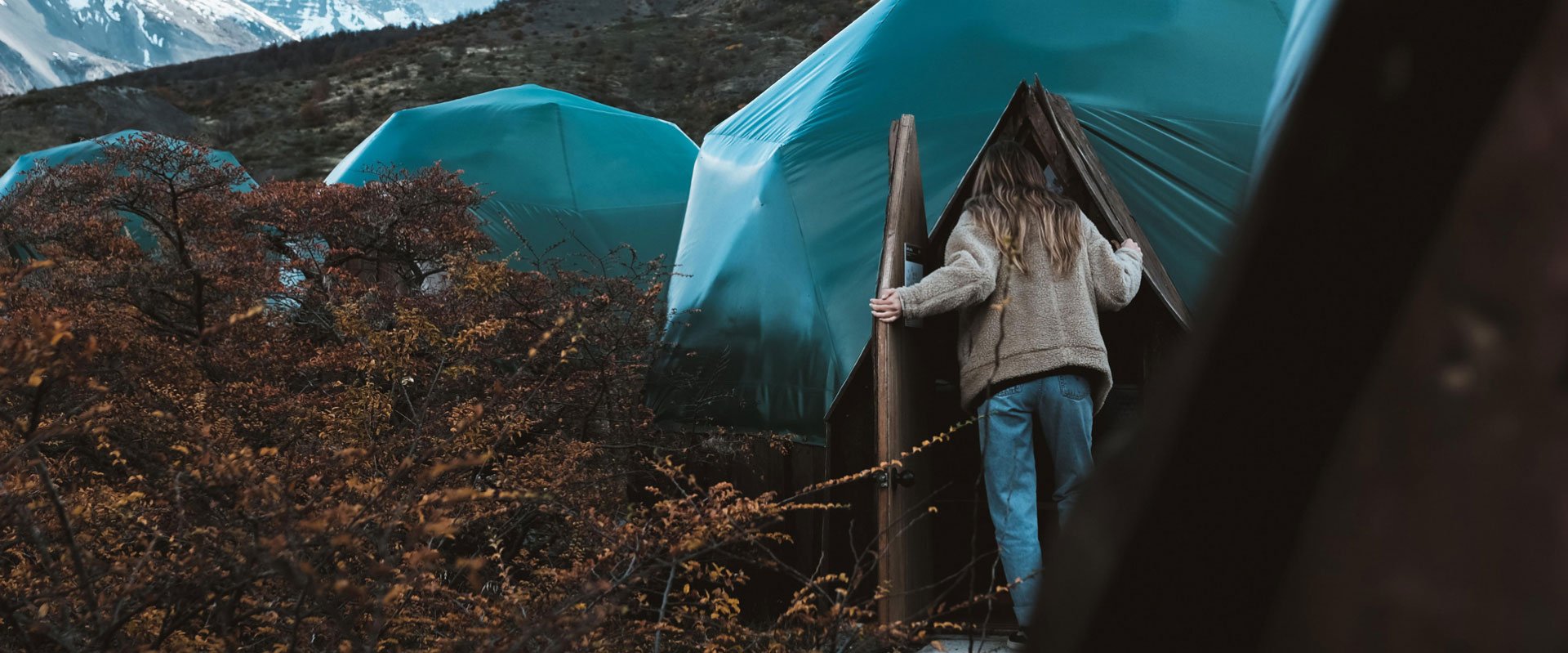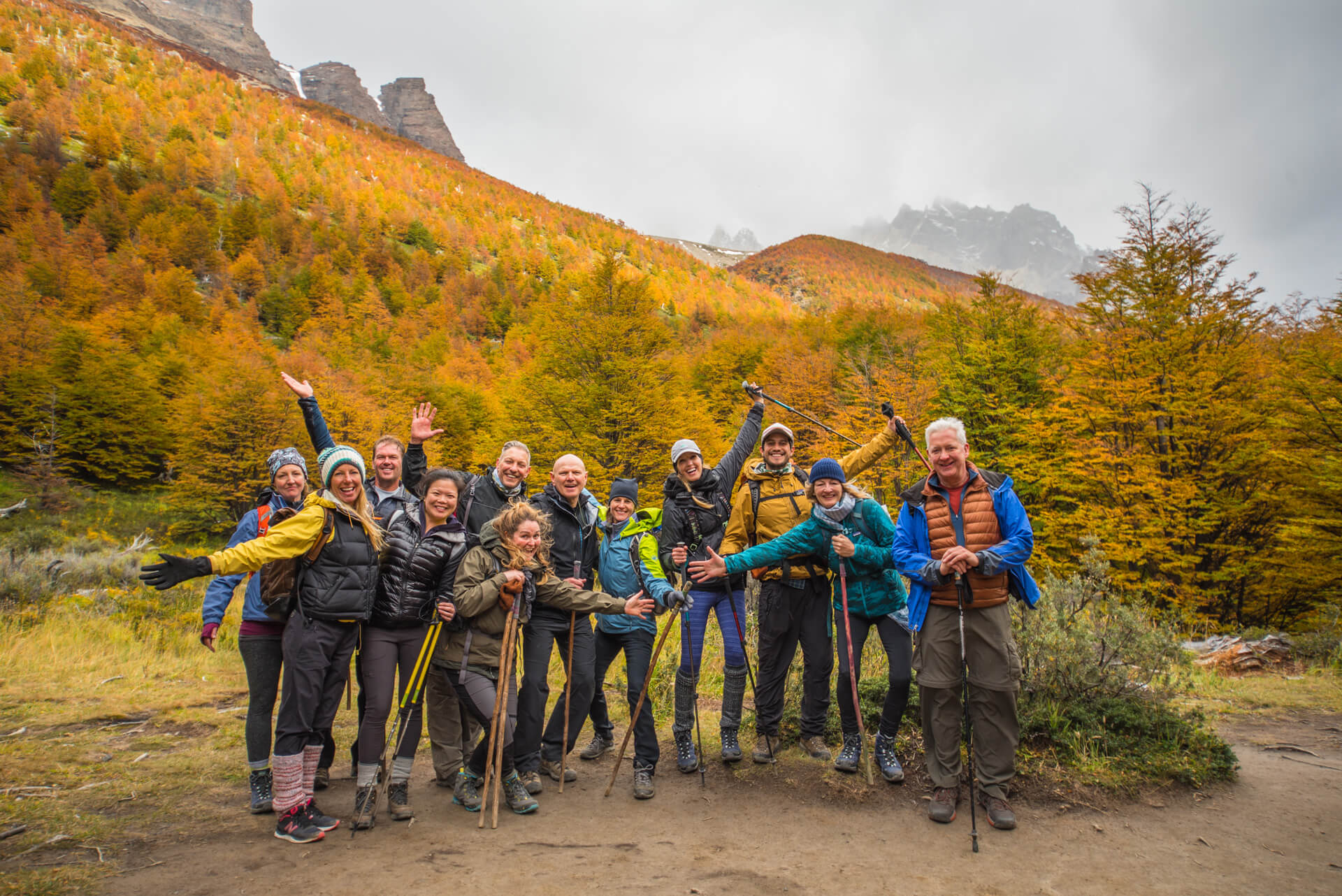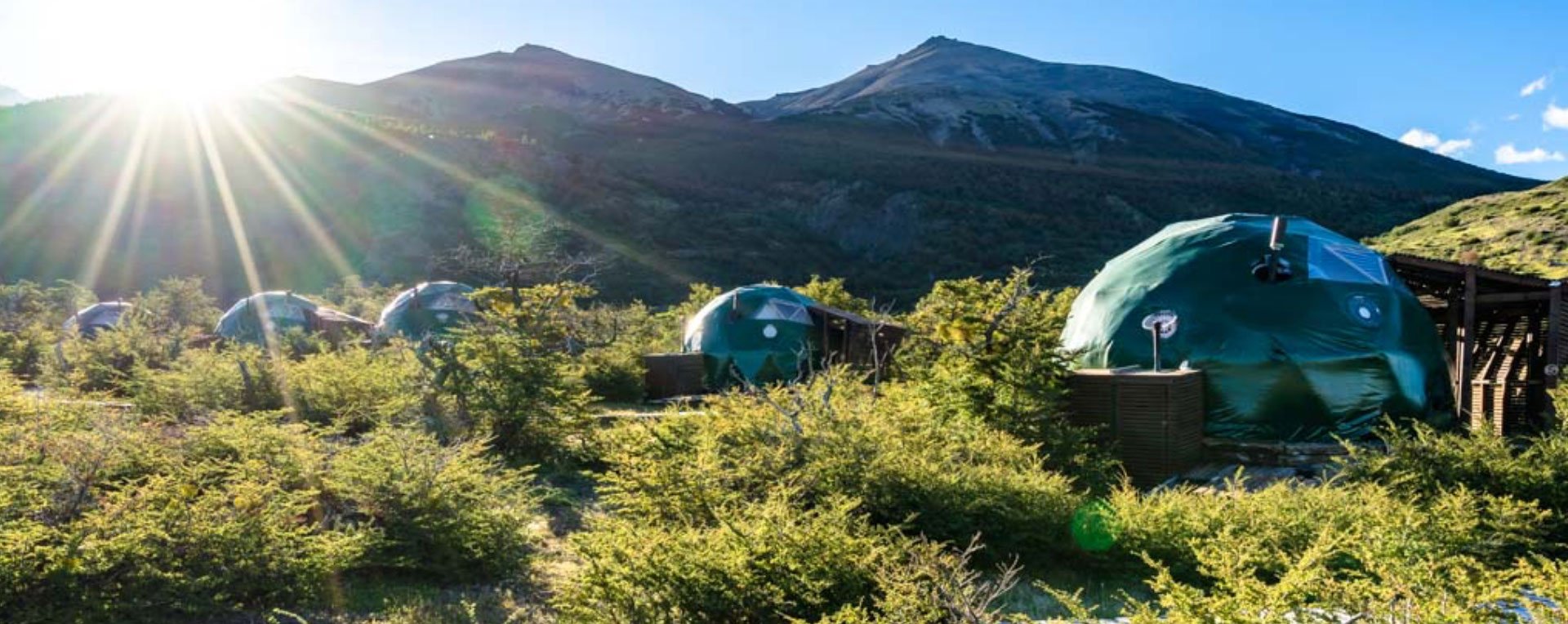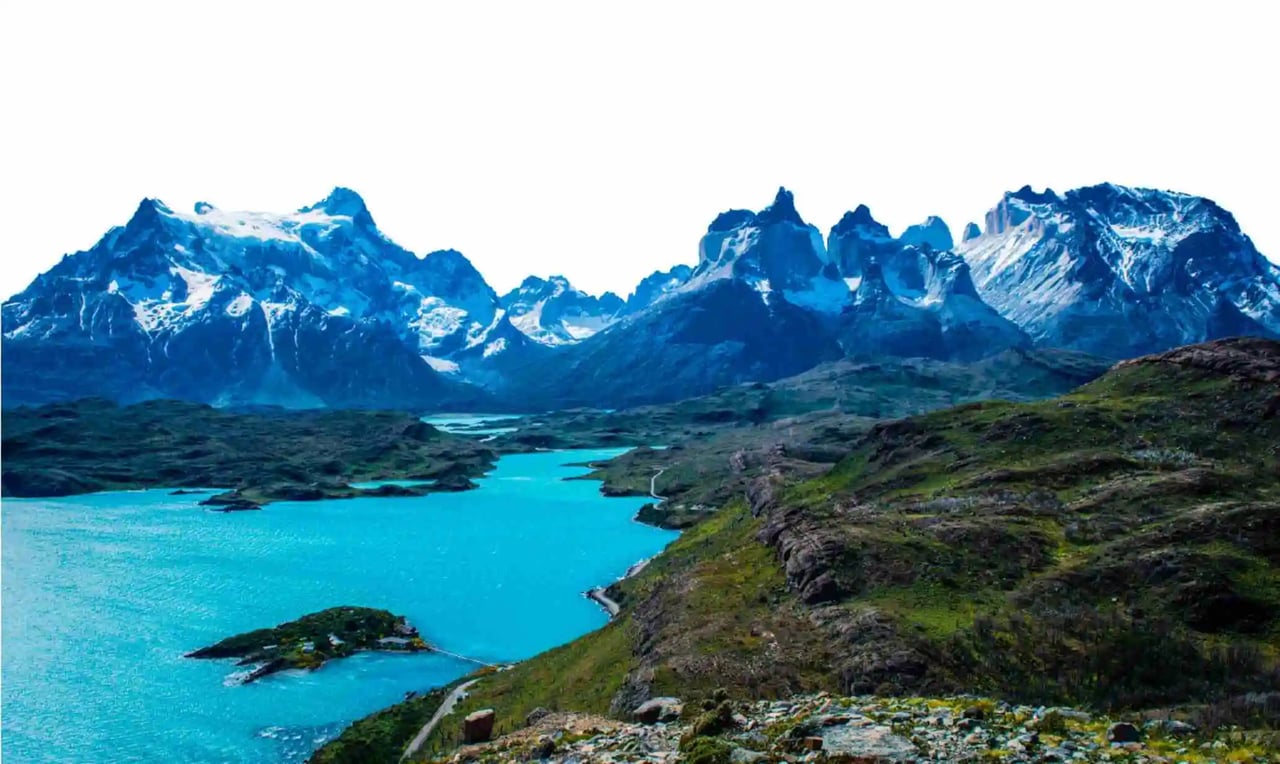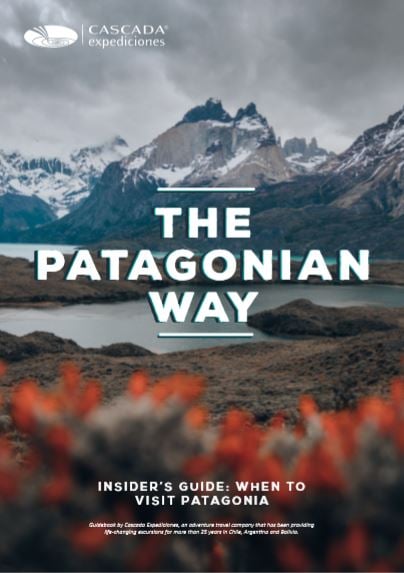In 1977, the travel writer Bruce Chatwin stood before the wilds of Patagonia and jotted down prose that would send him into the annals of literature He noted that there was an impressive absence of sound, save the wind that ricocheted about in whirs and whistles. He was evidently much moved by what he witnessed, and his In Patagonia treatise is considered to be one of the most important travel books of all time.
Why did Chatwin go to Patagonia, of all places? It was for the mylodon, a giant sloth-like creature that used to occupy the region around 5000 years ago and which is now extinct. It took just a fragment of dried-up, shriveled skin to entice Chatwin to this exceedingly remote corner of the world, just a short hop away from the icy shores of Antarctica.
Luckily it takes a lot less to attract people today. After all, Patagonia is no stranger to us - especially as National Geographic just highlighted Torres del Paine as one of the World's Most Beautiful Places for 2018. We long for its crisp air as we tap away in our cubicles, dreaming of the day when we finally get to be face to face with the jagged mountain spires we have admired so much within the pages of our magazines. I hate to break it you but ... it really is that beautiful.
Beauty aside, there is another reason why people flock to Patagonia - and it's a good one. For here wildlife watching has become a big draw, the chance to see cute and unusual creatures in their natural habitat and if you're reading this, chances are good that you are thinking about embarking on your own trip to do exactly that in Patagonia. Our Wildlife Safari program gives you the best chance to encounter the flora and fauna of Torres del Paine, but what exactly will you see? Let's take a look.
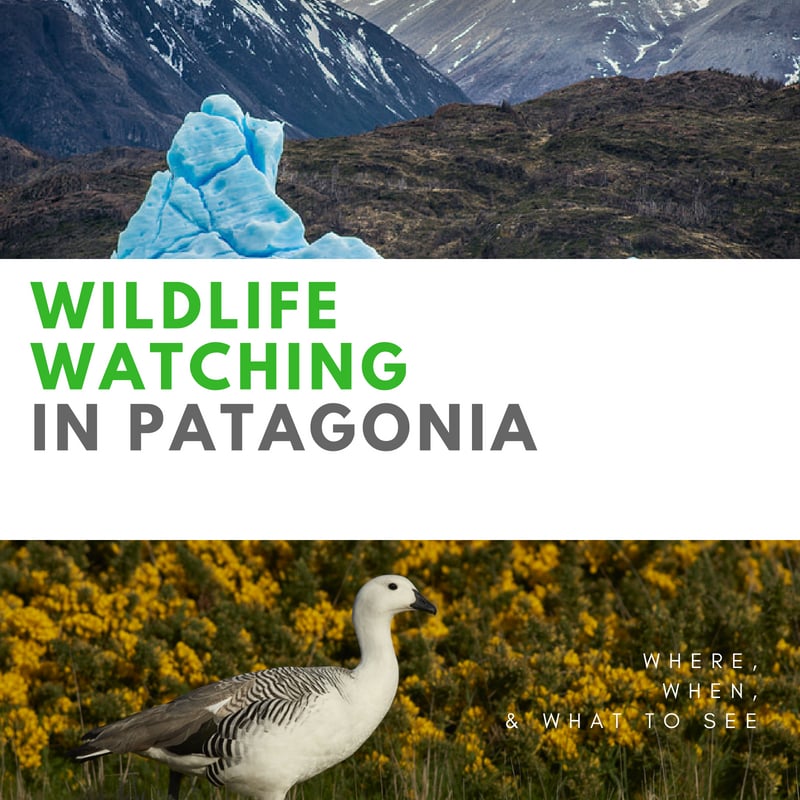
The Big Five
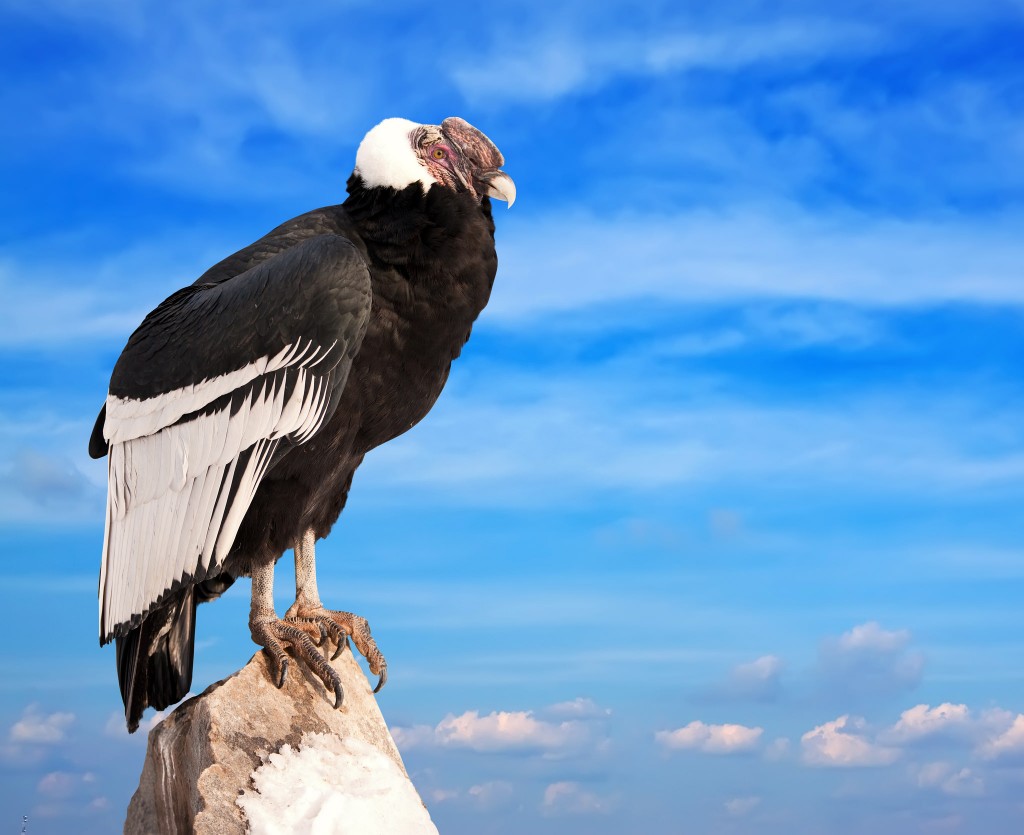 Andean Condor - basically a huge vulture, this scavenger can be found throughout Chile, especially around Torres del Paine National Park and Laguna Armaga. With a wingspan of 3.2metres and a weight of 15kg, it isn't the most graceful bird in the world - in fact, it relies completely on the wind to get airborne and once it is, rises gracefully up to around 5,500 meters. It can live to be around 50 years old, laying one egg every other year or so; sadly the Andean Condor is considered 'nearly endangered' by the International Union for the Conservation of Nature. For an excellent article about the Condor, have a read of this by Hakai Magazine.
Andean Condor - basically a huge vulture, this scavenger can be found throughout Chile, especially around Torres del Paine National Park and Laguna Armaga. With a wingspan of 3.2metres and a weight of 15kg, it isn't the most graceful bird in the world - in fact, it relies completely on the wind to get airborne and once it is, rises gracefully up to around 5,500 meters. It can live to be around 50 years old, laying one egg every other year or so; sadly the Andean Condor is considered 'nearly endangered' by the International Union for the Conservation of Nature. For an excellent article about the Condor, have a read of this by Hakai Magazine.
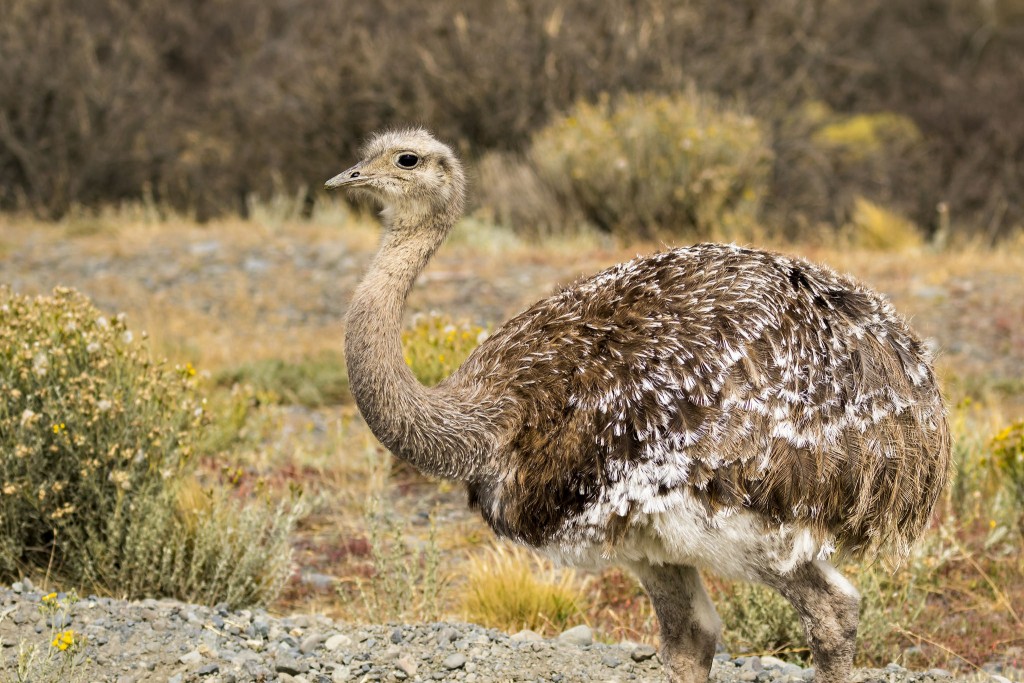 Ñandu - also known as the Darwin's Rhea or Lesser Rhea, this striking bird is related to the ostrich and, like the ostrich, is a gifted sprinter, running up to 37 miles an hour. Interestingly, it is the male bird that incubates and raises the chicks - sometimes up to 30 and all from different mothers - and if a stray chick crosses its path, it will adopt it as its own.
Ñandu - also known as the Darwin's Rhea or Lesser Rhea, this striking bird is related to the ostrich and, like the ostrich, is a gifted sprinter, running up to 37 miles an hour. Interestingly, it is the male bird that incubates and raises the chicks - sometimes up to 30 and all from different mothers - and if a stray chick crosses its path, it will adopt it as its own.
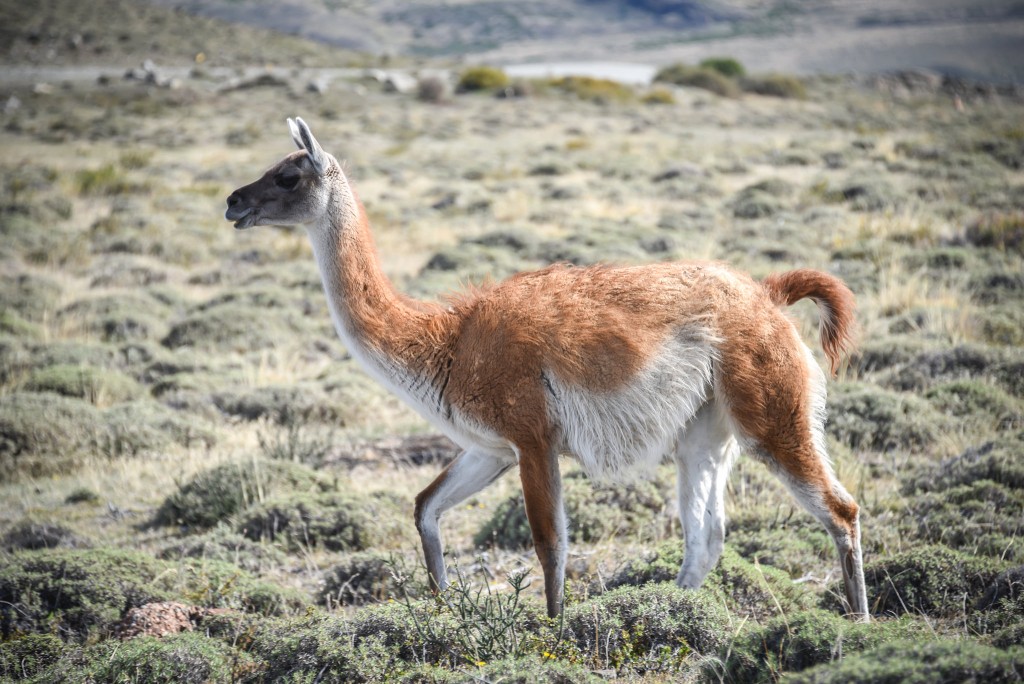 Guanaco - these graceful camelids are numerous (there are around 1,500 in Torres del Paine), commonly seen on the Patagonian Steppe.
Guanaco - these graceful camelids are numerous (there are around 1,500 in Torres del Paine), commonly seen on the Patagonian Steppe.
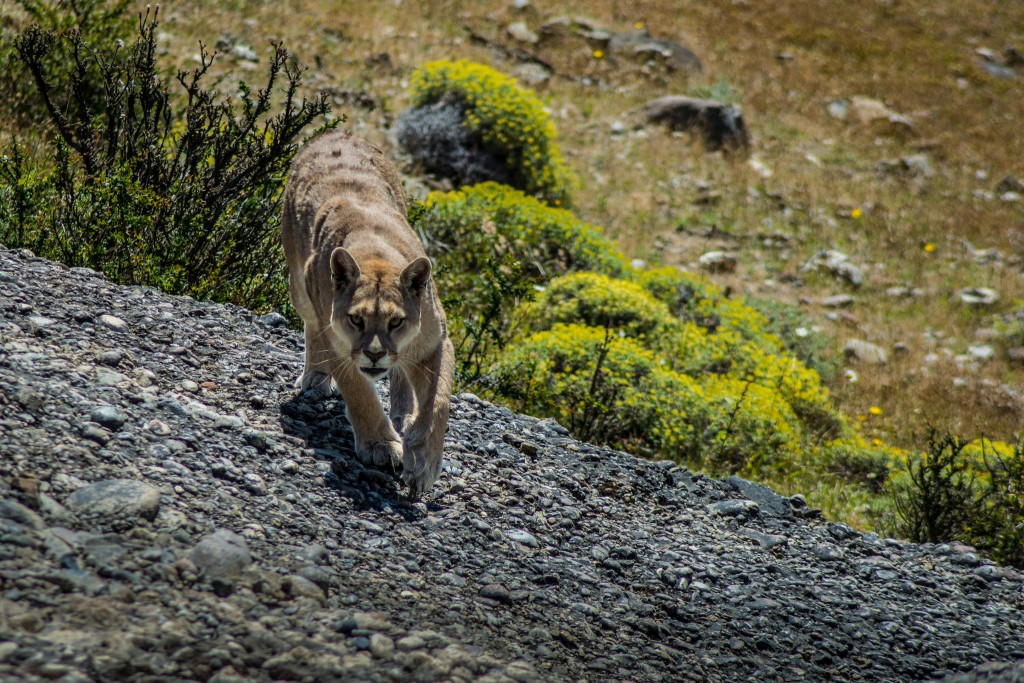 Puma (Mountain Lion) - up until 1980, puma hunting was still legal in Chile. Since the government outlawed the practice, this large cat has been able to make a comeback, making an appearance around dusk and dawn hunting guanacos, so your best chance of spotting one is around the Patagonian Steppe where the camelids graze.
Puma (Mountain Lion) - up until 1980, puma hunting was still legal in Chile. Since the government outlawed the practice, this large cat has been able to make a comeback, making an appearance around dusk and dawn hunting guanacos, so your best chance of spotting one is around the Patagonian Steppe where the camelids graze.
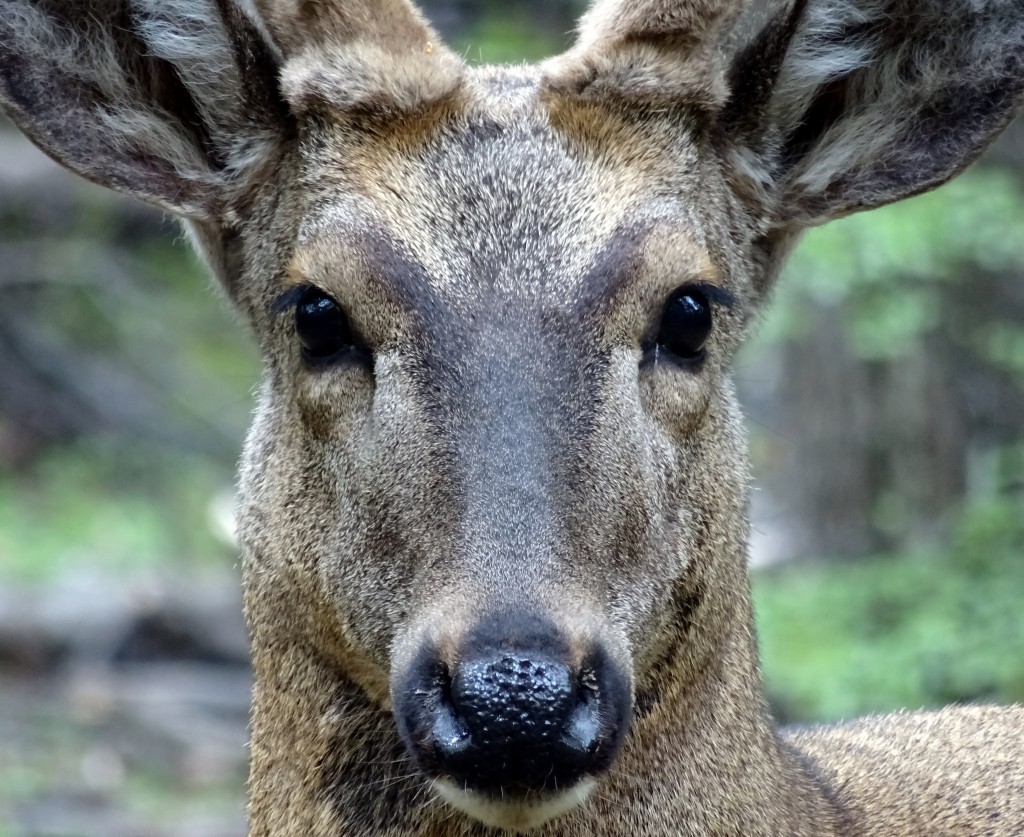 Huemul (South Andean Deer) - this is a stocky deer at home on rocky terrain. In 2006 they were named a Chilean National Natural Monument, although they are also endangered, suffering under the puma and changes to their habitat. While they are very shy creatures, your best chance of spotting one is around Lago Grey, the Silencio Valley, and Patagonia Park.
Huemul (South Andean Deer) - this is a stocky deer at home on rocky terrain. In 2006 they were named a Chilean National Natural Monument, although they are also endangered, suffering under the puma and changes to their habitat. While they are very shy creatures, your best chance of spotting one is around Lago Grey, the Silencio Valley, and Patagonia Park.
The Little Five
Hairy Armadillo - these are odd animals, with their protective plates covered by long hair. You have a good chance of seeing one throughout Spring and Autumn; they hibernate during winter and are nocturnal during summer. You may also come across the Dwarf Armadillo. Both armadillos are hunted for their meat and shell, and are considered to be a pest.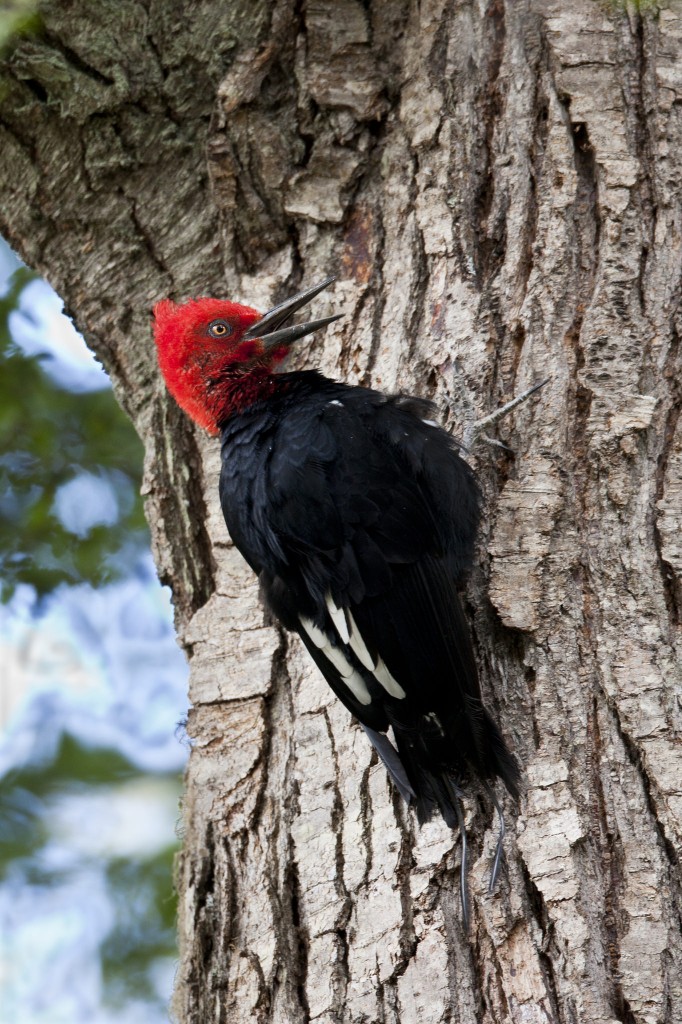
Magellanic Woodpecker - this bird is easily heard in the Nothofagus and Nothofagus-Austrocedrus trees due to the constant 'tap-tap' it makes banging its beak into the bark in search of sap or insects to eat (or even to make a nest). The male is recognized by its striking red head, and both male and female birds have a black body, yellow eyes, and white underwing patches.
South American Grey Fox - this fox is protected in Chile, but have suffered a bit at the hands of local farmers. You may also see Darwin's Fox or the Culpeo Fox.
Coypu - this is Chile's largest rodent. They are nocturnal and feed on aquatic plants as well as crustaceans. Their burrows can be found on the edges of waterways in marshes and riverbanks.
Hog-nosed skunk - although these skunks are nocturnal, you have a good chance of spotting one at twilight when they pop out to feed on roots, small mammals, crabs and spiders in grassy areas.
Furry Critters
Mountain Vizcacha - this animal, similar to a rabbit but with a long tail, is protected within Chile but has still suffered from illegal hunting. They like to sunbathe during the day and live in the rocks of the mountains.
Magellanic Tuco Tuco -If you hear hammering beneath the earth of the Pampas, chances are good you are astride a colony of these rodents. They burrow beneath the earth in search of bulbs and plant roots. Sheep farming has severely impacted their numbers.
Degu - these rodents live in sclerophyll woodlands. Cute and furry, these small critters have a long tail that, if grabbed by a predator, is easily ripped away and does not grow back.
Mara - another rodent, this cuddly-looking critter lives in huge dens of around 22 pairs.
Lesser Grison - is a member of the weasel family, and hunts small mammals and birds, as well as eating eggs, plants, and fruit. They are nifty climbers and can also swim. They are nocturnal.
Andean Mountain Cat - these cats have thick, greyish fur and are often seen at dusk when they hunt tuco-tucos, reptiles, and birds.
Geoffrey's Cat - these nocturnal cats look a bit like a regular domestic cat, though their fur may be spotted, black or grey. They are a protected species.
Kodkod - is the smallest feline in Latin America, with a dark body and yellow-colored lines on their heads. They make nests in trees to live in and eat rodents and birds.
Marine Wildlife
Marine Otter - there are less than 1,000 of these otters left in Chile and Peru, so your likelihood of spotting one floating on its back on the waves is pretty slim. They feed on crabs, fish, and even birds.
Southern River Otter - unfortunately, this otter is endangered as well, hunted for its thick fur, They live in burrows that they get to via an underwater entrance as well as an additional entrance in the riverbank. Amazingly for a creature that feeds on fish, shrimps, and frogs, this otter closes its eyes while swimming!
South American Sea Lion - these aggressive seals take up residence every December along the Valdes Peninsula, with ten females to every one male.
South American Fur Seal - these seals live in huge numbers (there are 40,000 in Chile), and are a protected species. They breed between October and January.
Southern Elephant Seal - the biggest seal of them all, each male has around 50 females and mates up to 50 times a day! Peninsula Valdes is home to huge numbers of these seals.
Whales
Orca - also known as the Killer Whale, this black and white mammal is actually a type of dolphin. They can be found (occasionally) around the southern fjords of Chile and Peninsula Valdes of Argentina in September, March, and April.
Blue Whale - this is the largest animal to have existed on Earth, up to 30meters long and weighing a whopping 180 tonnes. It is difficult to gauge their huge size because they are tricky to spot, diving down to 500m and coming to the surface only to take a huge gulp of air. These whales can be seen off the coast of the island of Chiloe between January and April.
Southern Right Whale - this is a sociable animal that often interacts with other whales, dolphins and even boats! 2000 of these whales can be spotted in the Valdes region of Argentina, as well as from Peninsula Valdes, Puerto Madryn, Playa Doradillo and Puerto Piramides between June and December.
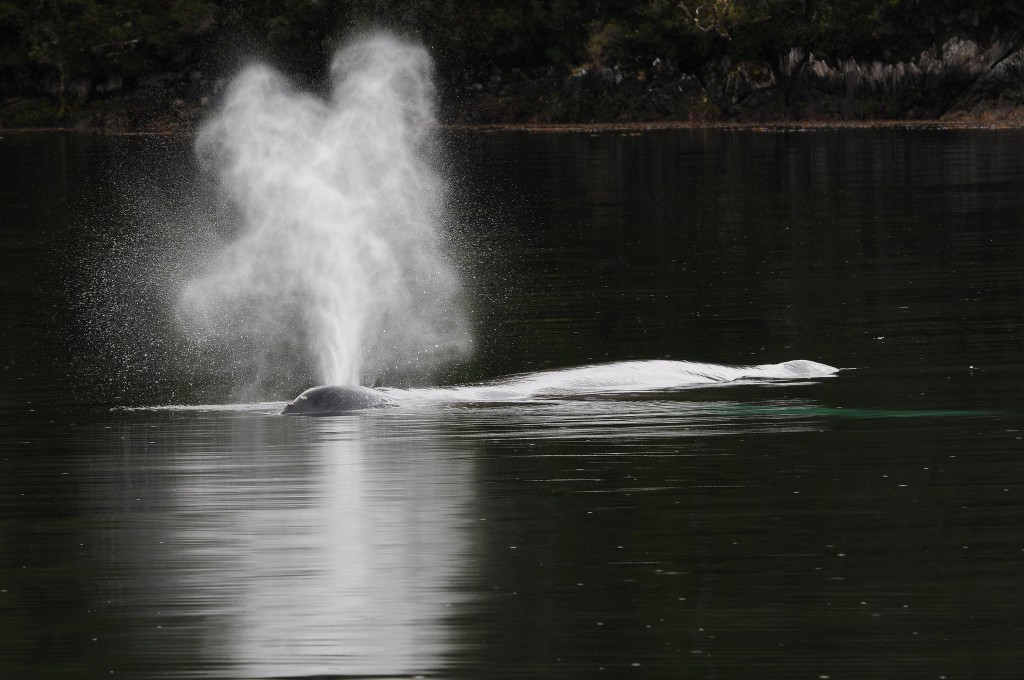
Humpback - these large-finned whales migrate 25,000km every year, spending the summer in chilly, polar waters and breeding/birthing in subtropical waters during winter. They love the Francisco Coloane marine park in the Chilean fjords and can be found there December to March.
Dolphins
Dusky Dolphin - these grey dolphins are incredibly agile, known for their water acrobatics and huge air jumps. They have a short beak and a black dorsal fin.
Commerson's Dolphin - this dolphin is white and black, and easily spotted in pods of around 100. They love to jump out of the water and can often be seen playing with boats.
Risso's Dolphin - these grey-colored dolphins have a huge dorsal fin and are covered in body scars.
Peale's Dolphin - these dolphins love to jump out of the water and make huge splashes. You may see one in the bays and inlets of Patagonia in groups of 5 to 30.
Birds
Patagonia is home to a whopping 460 species of birds so it is no wonder that this tiny slice of paradise is drawing the budding ornithologists in droves (or should that be 'flocks'?).
Austral Pygmy-Owl - this tiny owl can be found throughout the region (even within city parks!) but only the keen-eyed are likely to spot him given the fact that he is, like other owls, nocturnal. It can eat big prey much bigger than itself, most notably rodents, birds, insects, and reptiles, hunting at dusk when its shrill cry breaks the silence of the Nothofagus forest.
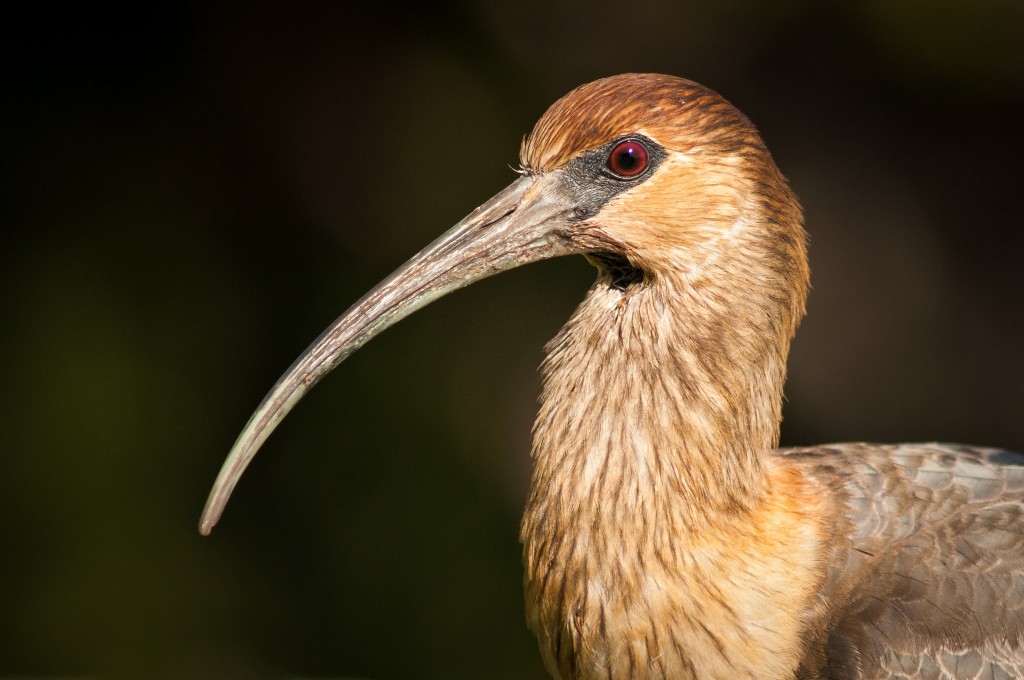
Black-faced Ibis - found in marshes and meadows, this Ibis feeds on worms, frogs, and other small water-dwelling critters. Look out for their huge nests in the reeds or nearby trees.
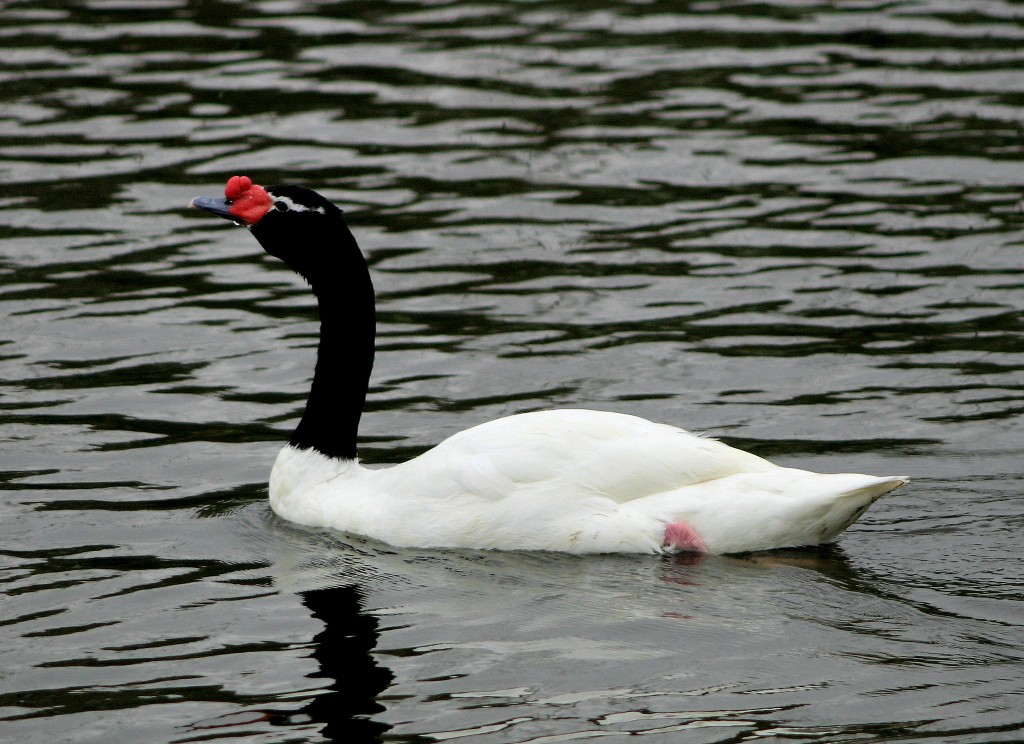
Black-necked Swan - the most regal of Patagonia's birds, it is easily recognizable due to the contrast of its white body and black neck and head.
Torrent Duck - these ducks live in fast-flowing rivers, easily traversing the rapids and swimming against the torrents without breaking a sweat. They have small claws on the tips of their wings and a bright red, stout beak.
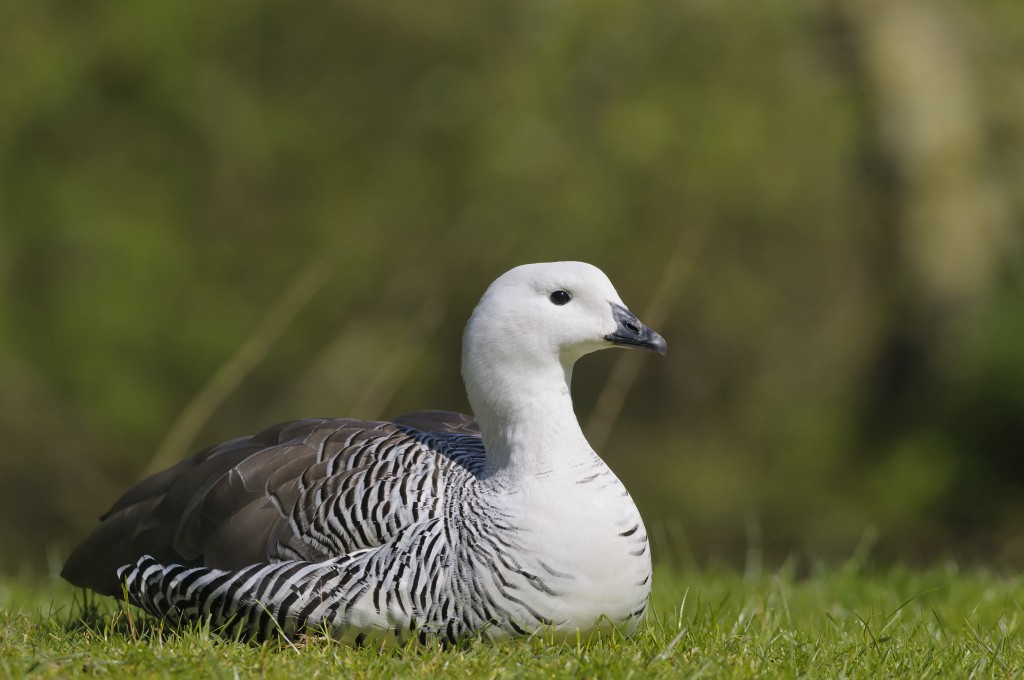
Upland Goose - while the males stand out with their white head against the browns of the pampas, the females are more camouflaged, with a brown head and black and white body. You are likely to spot them in the grass - likely around sheep -or on the coast.
Penguins
There are four types of penguins that you can mark on your 'to see' list: Humboldt, King, Gentoo, and Magellanic.
Magellanic Penguin - these are migrating penguins, moving north to Peru during winter before returning to breed around the rocks and grasslands undercover in bushes or burrows.
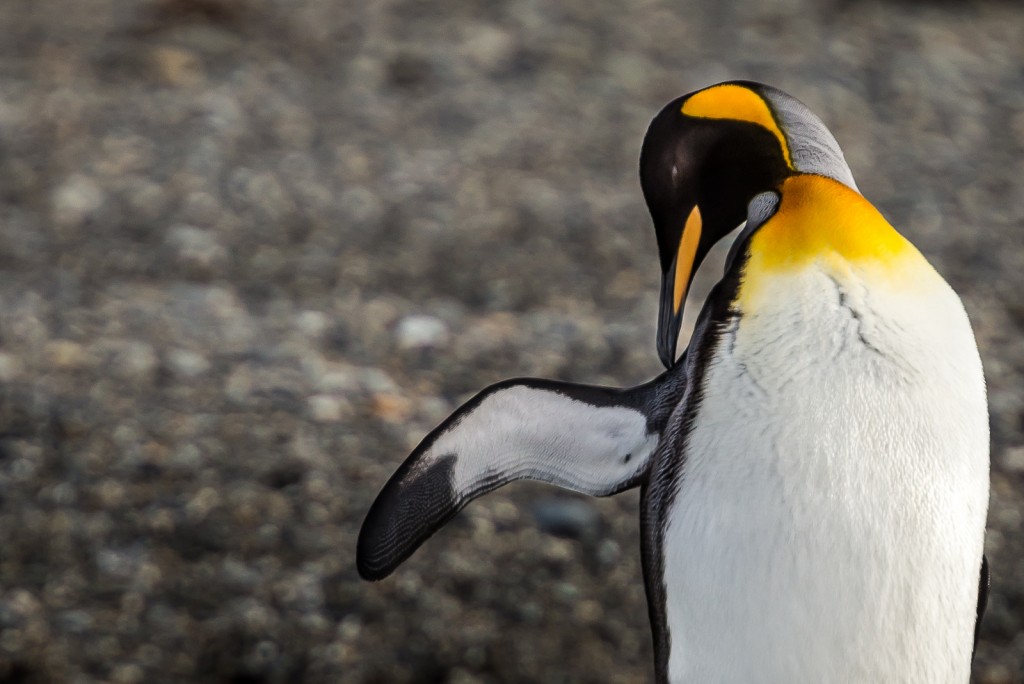 Photo Credit: Craig Brady
Photo Credit: Craig BradyKing Penguin - these guys look just like Emperor Penguins, with an orange stripe on their heads, white front and grey jacket. They live in huge groups on beaches or tussocks, and mostly fast between May and Winter; they are also very picky eaters, preferring pelagic fish (like the lanternfish) which make up the bulk of their diet.
Gentoo Penguin - live in smaller colonies and eat what they find around them (mostly krill and other crustaceansns).
Humboldt Penguin - these birds nest in guano deposits and love to look for their dinner after sunrise close to shore. They look a bit like the Magellanic Penguin, but beady wildlife-watchers will notice that the Humboldt has a sliver of fleshy skin below its lower jaw, as well as less black and white bands around its head.
The Cardinal Rule
... is to leave no trace! We believe that to protect the places and creatures that we love, we need to forge personal connections with them. That way we will be committed to protecting them, perhaps even by going out of our comfort zones to keep them safe and happy. It is so important to protect this beautiful part of the world (in case you've forgotten why it needs help, have a read of this here). To be a responsible traveler, you should not stray from the main tracks, leave no litter (including toilet paper), do not attempt to touch or interact with any wildlife, and keep your distance. You are there to observe these creatures in their natural habitat, and they also need to continue being wary of humans.
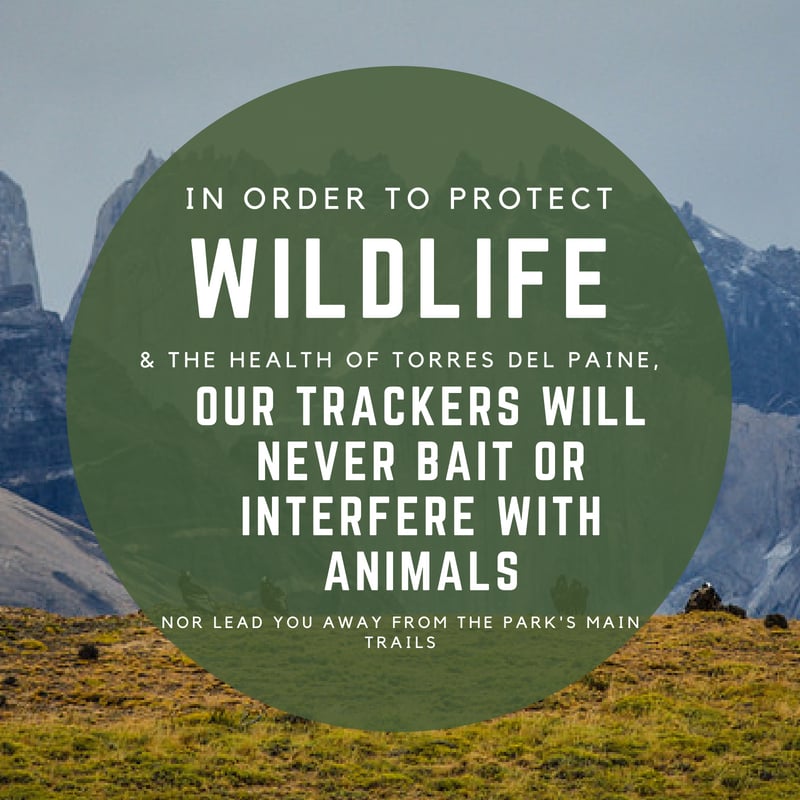
Do you want more information? Visit cascada.travel and learn about our programs

